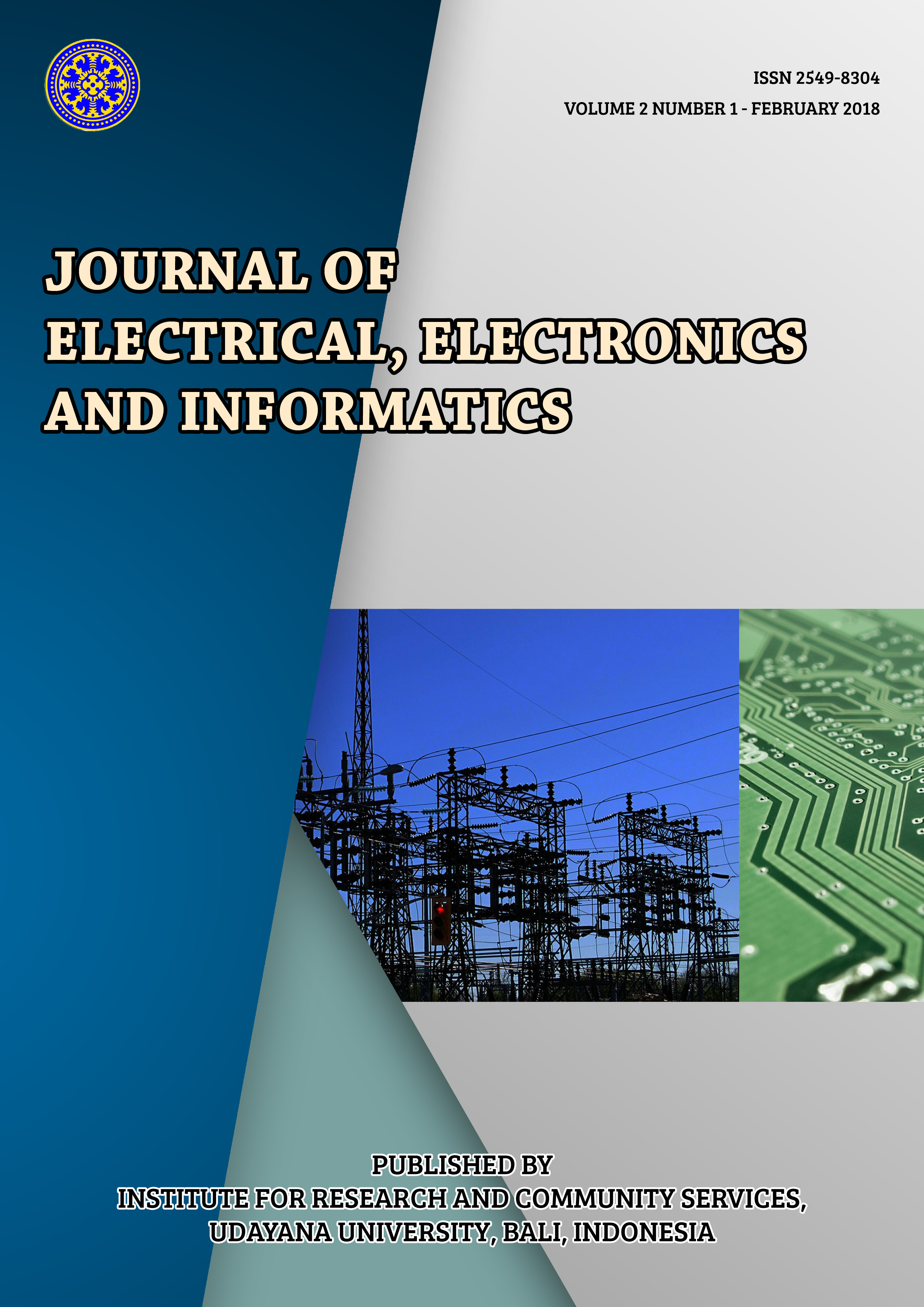Trafic Signs Detection Based On Saliency Map Using Canny Edge
Abstract
This paper proposed Canny edge detection to detected saliency map on traffic sign. The edge detection functions by identifying the bounds from an object on an image. The edge of an image is an area that has a strong intensity of light.The pixel intensity of an image changes from low to high values or otherwise. Detecting the edge of an image significantly will decrease the amount of data and filters insignificant information by not deleting necessary structure from the image. The image used for this paper is a digital capture of a traffic sign with a background. The result of this study shows that Canny edge detection creates saliency map from the traffic sign and separates the road sign from the background. The image result tested by calculating the saliency distance between a tested image and trained image using normalized Euclidean distance. The value of
normalized Euclidean distance is set between 0 to 2. The testing process is done by calculating the nearest distance between the tested vector features and trained vector features. From the examination as a whole, it can be concluded that road sign detection using saliency map model can be built by Canny edge detection. From the whole system examination, it resulted a accuracy value of 0,65. This value shows that the data was correctly classified by 65%. The precision value has an outcome of 0,64, shows that the exact result of the classification is 64%. The recall value has an outcome of 0,94. This value shows that the success rate of recognizing a data from the whole data is 94%.
Downloads
References
[2]Borji, Ali dan Laurent Itti. 2013. State-of-the-Art in Visual Attention Modeling. IEEE Transactions On Pattern Analysis And Machine Intelligence, Vol. 35, No. 1, January 2013.
[3]Gao, Shangbing dan Yunyang Yan. 2012. Salieny and Active Contour based Traffic Sign Detection. ISSN 1746-7659, England, UK Journal of Information and Computing ScienceVol. 7, No. 3, 2012, pp. 235-240.
[4]Hechri, Ahmed dan Abdellatif Mtibaa. 2011.Lanes and Road Signs Recognition for Driver Assistance System. IJCSI International Journal of Computer Science Issues, Vol. 8, Issue 6, No 1, November 2011.
[5]Itti, L., Koch, C. dan Niebur, E. 1998. A Model Of Saliency-based Visual Attention For Rapid Scene Analysis. IEEE Transactions On Pattern AnalysisAnd Machine Intelligence Volume 20, Issue 11, Nov 1998.
[6]Itti, L. 2004. Automatic Visual Salience. Scholarpedia, 2(9):3327, 2007.
[7]Jayachandra, Chinni. dan H.Venkateswara Reddy. 2013. Iris Recognition based on Pupil using Canny edge detection and K-Means Algorithm. International Journal Of Engineering And Computer Science ISSN:2319-7242 Volume 2 Issue 1 Jan Page No. 221-225.
[8]Loy, Gareth.2004. Fast Shape-based Road Sign Detection for aDriver Assistance System. Computer Vision andActive Perception LaboratoryRoyal Institute of Technology (KTH).
[9]Menteri Perhubungan RI. 2004. Rambu Lalu Lintas.
[10]Neibur, Ernst. 2007. Saliency Map.
[11]Parikh,N, L Itti, dan J. Weiland. 2010. Saliency-Based Image Processing ForRetinal Prostheses. JournalOf Neural Engineering J. Neural Eng. 7 (2010) 016006 (10pp).
[12]Polatsek , Bc. Patrik. 2015. Spatiotemporal Saliency Model Of Human Attention In Video Sequences (Thesis).
[13]Powers, David M W. 2011. Evaluation: From Precision, Recall and F-Factor to ROC, Informedness, Markedness & Correlation.Journal of Machine Learning Technologies(2011) 2(1): 37-63 [online].
[14]Putra, Dharma. 2010. Pengolahan Citra Digital. Yogyakarta: Andi.
[15]Putra, Dharma. 2009. Sistem Biometrika. Yogyakarta: Andi.
[16]Rambe, SJ. 2011. Bab 2 Landasan Teori Citra Digital.
[17]Treisman, Anne M. dan Garry Gelade.1980. A Feature-Integration Theory Of Attention.Cognitive Psychology, vol. 12, pp. 97-136, 1980.
[18]Won,Woong-Jae, Sungmoon Jeong, dan Minho Lee.2007. Road Traffic Sign Saliency Map Model.Proceedings of Image and Vision Computing New Zealand 2007, pp. 91–96, Hamilton, New Zealand.
[19]Zhang, Jianming dan Stan Sclaroff . 2013. Saliency Detection: A Boolean MapApproach. JournalIEEE International Conference on Computer Vision (ICCV).











